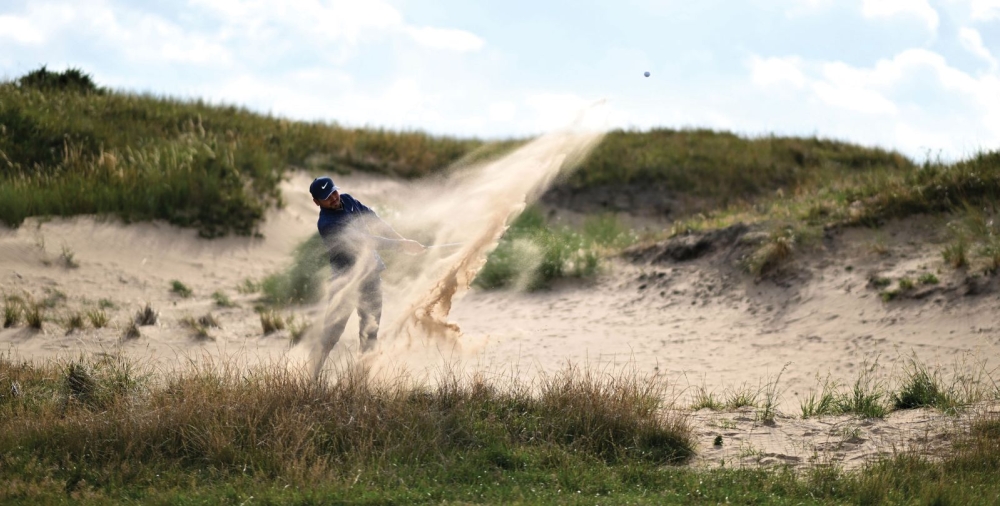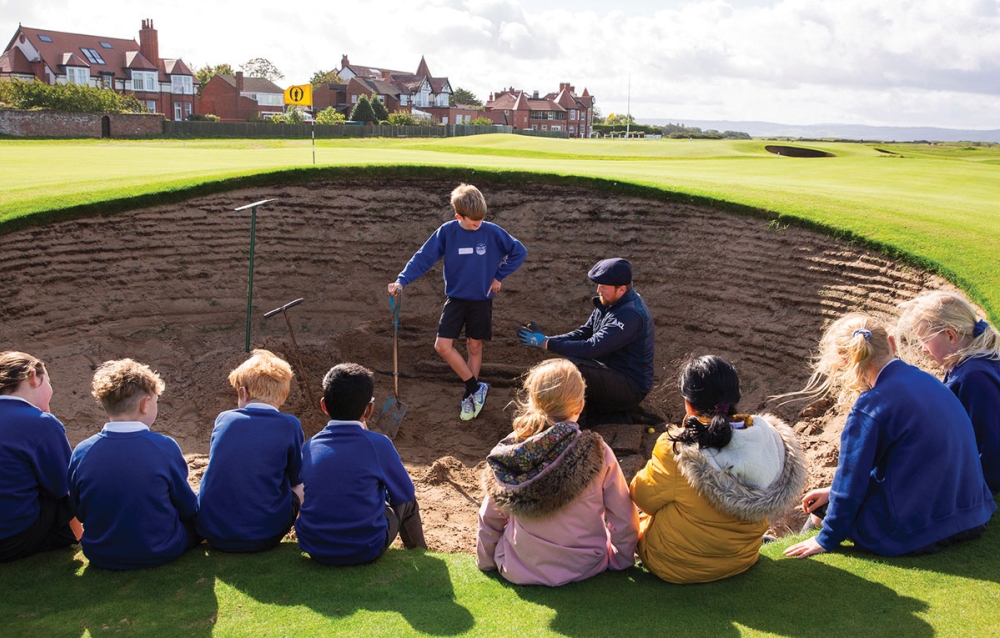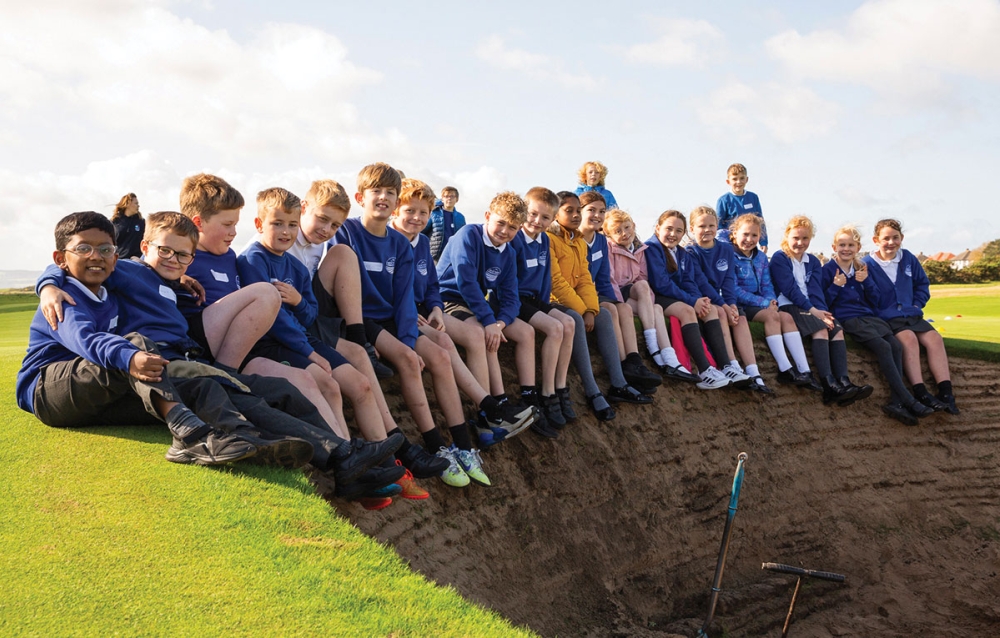Guess what? Both have come to pass and I struggle to get my head around it all.
This year at Royal Liverpool the greenkeeping team were given their first demonstration of an autonomous mower. This wasn’t part of some scheme to replace people; on the contrary, robots can free up time for human beings to carry out the more important skilled work machines can’t do, instead of cutting menial areas of turfgrass. The turf industry is full of problem solvers and progressive minds and here at Hoylake the green staff are lucky to have access to all the latest gadgets, many of which are in use on the Royal Liverpool links.

I already have technology that measures soil moisture, and this is connected to the irrigation software system. Along with the weather station, technology can calculate the plant moisture deficit and propose a water schedule to replenish lost moisture. A bit of a rigmarole, eh? However, golf courses are under constant pressure to present better playing surfaces and, like many Clubs, at Hoylake we are determined to make progressive improvements year on year. Modern technology makes this possible.
But change can’t happen in a vacuum. Communication is key to keeping the membership - along with returning visitors and potential new guests - up to date with all the latest news from the course. Explaining why changes are being made to improve the course, and the reasoning behind them, is essential. Tech like drones, 4k phones, recording kit and radio microphones enables me to update anyone who subscribes to the Royal Liverpool Greenkeeping YouTube channel. So when you’re playing the 3rd and hook your ball left to find the gorse all cropped down, by the time you return to the clubhouse you may well find a video has been published explaining exactly why.
The turf industry is full of problem solvers and progressive minds.
Modern golf course technology is not all robots and drones. Understanding changing weather patterns and restrictions on resources in a changing climate are of vital importance to any turf manager. 2023, in the run-up to the 151st Open, delivered two weather extremes that played havoc with the management of the course - and encouraged a 500% increase in the number of white hairs in what was once my full head of brown locks.
It seems now that each passing year breaks a record: the hottest day, the coldest day, but in ‘23 we experienced the driest first six months and the wettest latter six months. This was arguably the worst combination of weather events when trying to prepare perfect turf for a major Championship. No machine can help with that - at least not yet. Keeping fit for the future will mean regular investment in our irrigation systems to ensure water is never wasted and directed exactly where it is needed. Water is the most important weapon in a greenkeeper’s arsenal, and one that the Environment Agency is determined to conserve..

More effort will be required to ensure the links are being drained, water tables will be higher for longer spells, and if the links are to remain playable for all 12 months of a year, water management will be key to making this happen, especially through the winter. One thing is for sure, the future will embrace water farming systems whereby drainage water is reused the following summer as turf irrigation. The ultimate water cycle system is a project currently underway at Royal Liverpool. The word ‘sustainability’ is on everyone’s lips and water farming is vital.
Royal Liverpool has also worked hard to mine all of the sand used on site for topdressing, bunker sand and divot mix. We strive to ensure that resources are recycled and reused on site as much as possible. Sadly, sand is finite and although there have been decades of onsite sand used to control organic matter robot technology may need to be developed in such a fashion that a machine can work up and down a green zapping it! (Organic matter is the accumulation of dead grass, shoots and leaves that makes surfaces soft and prone to disease if levels become too high.)
We strive to ensure that resources are recycled and reused on site as much as possible.
The Club is proud to welcome many visitors from home and abroad, and the quality of turf is critiqued across countless platforms. It’s human nature to compare courses played, but by engaging with social media the visiting golfer can get up to speed with improvements and work undertaken on the turf before their visit.
What does the future hold for Hoylake? Drones delivering drinks to thirsty golfers? Robots raking bunkers? Or a handy new generation of golf clubs that always hit the ball straight? You never know, but something of which I’m certain is the importance of encouraging children and young people to consider taking their places in the golf course industry. We need to make the greenkeeping world enticing, nurture new talent, and then retain that talent.

Hoylake has started to do its bit. Recently we hosted a new initiative called First Green, led by my wife Jenny Bledge, the Workforce Project Manager for the British and International Golf Greenkeepers Association. First Green is an innovative environmental and STEM education programme using golf courses as classrooms - STEM stands for Science, Technology, Engineering and Maths - and Year 5 pupils from nearby West Kirby Primary School were invited to come along and discover what a greenkeeper does.
First Green is an innovative environmental and STEM education programme.
43 pupils took part in a variety of inclusive, hands-on practical learning stations like ‘how to build a bunker’. They discovered the importance of measuring and interpreting data, and how different technologies are used in a golf course context. They even received a quality putting lesson from Royal Liverpool Assistant Pro, Becky McGeehan, who kindly put a lot of effort into the session. First Green can not only introduce children to the science of golf, but also to the game itself.
This was a really important event for our very own greenkeeping team, teaching local children some of the skills they use every day to make this golf course what it is. We’ll continue to forge ever stronger links with local schools and colleges, introducing a diverse audience to the sport we love and the valuable green space golf courses offer in their community.
We aim to hold more educational events during the coming years, including those for older age groups too. It’s my view that such initiatives are vital to recruitment challenges within the industry.
